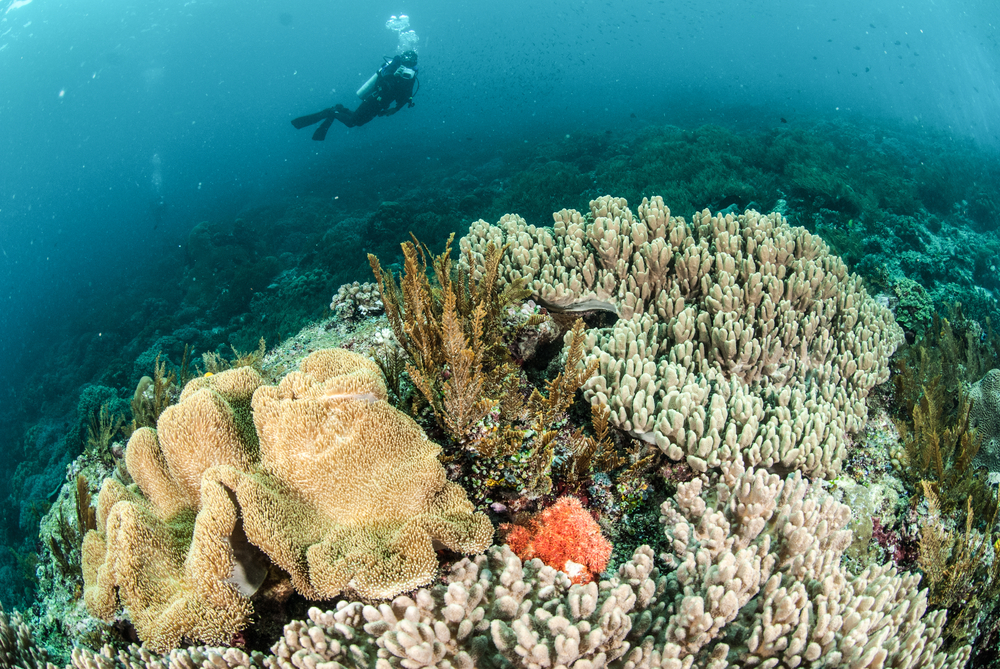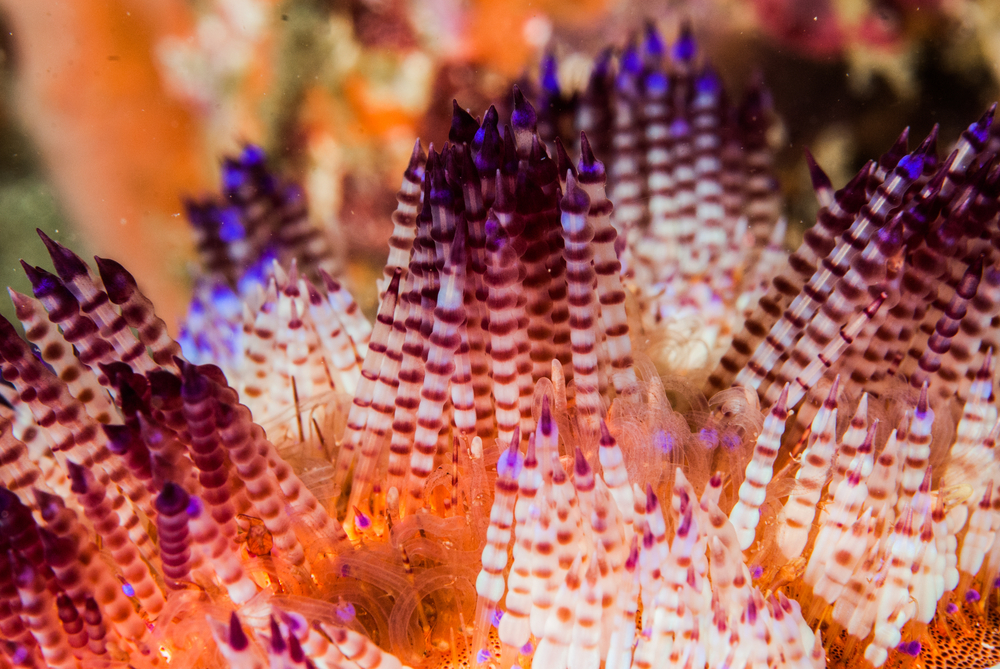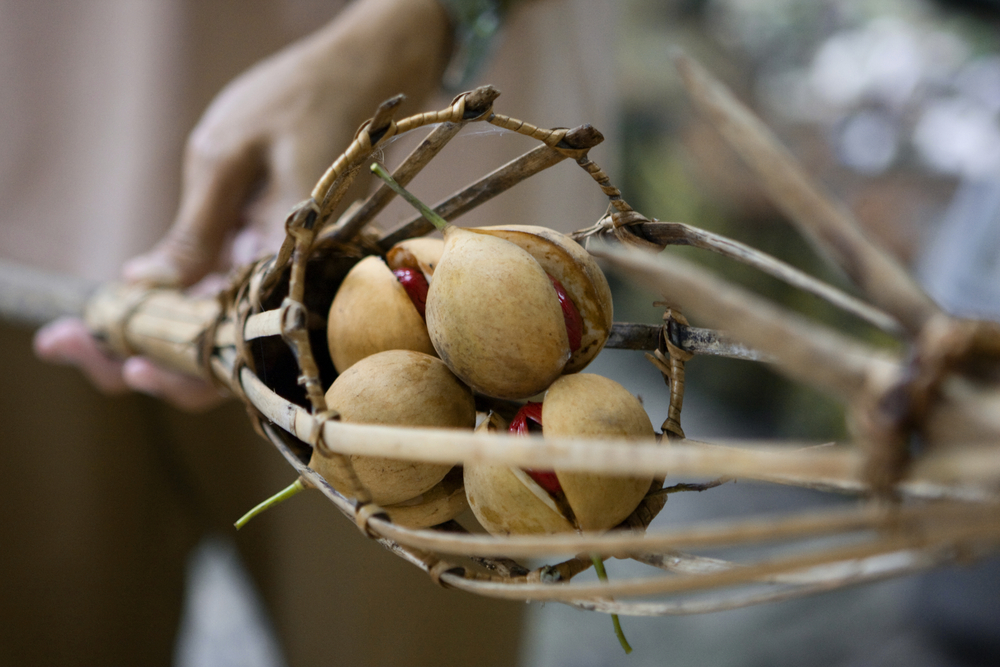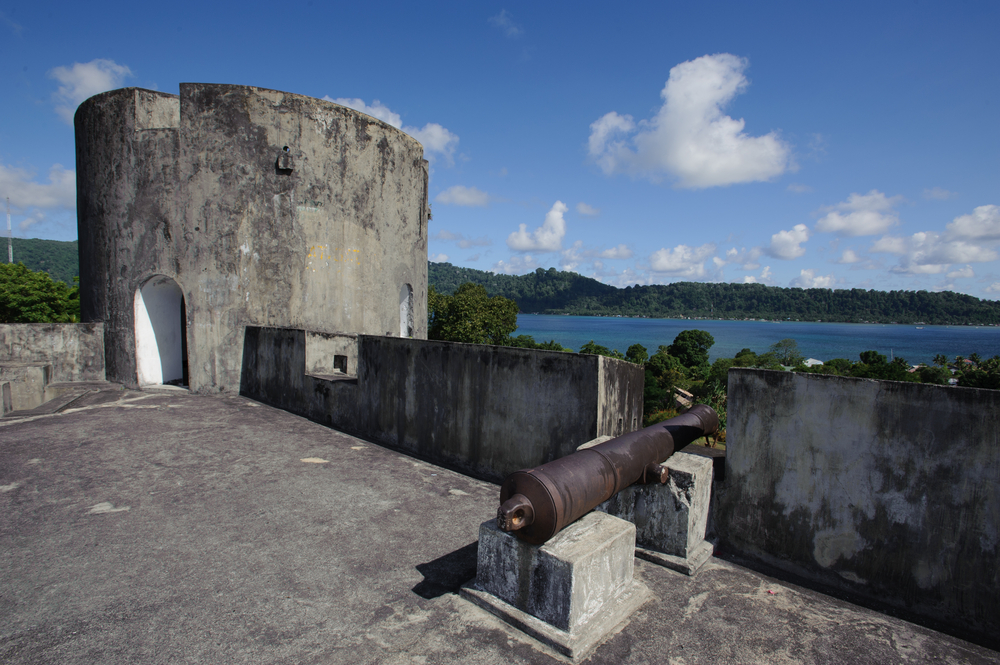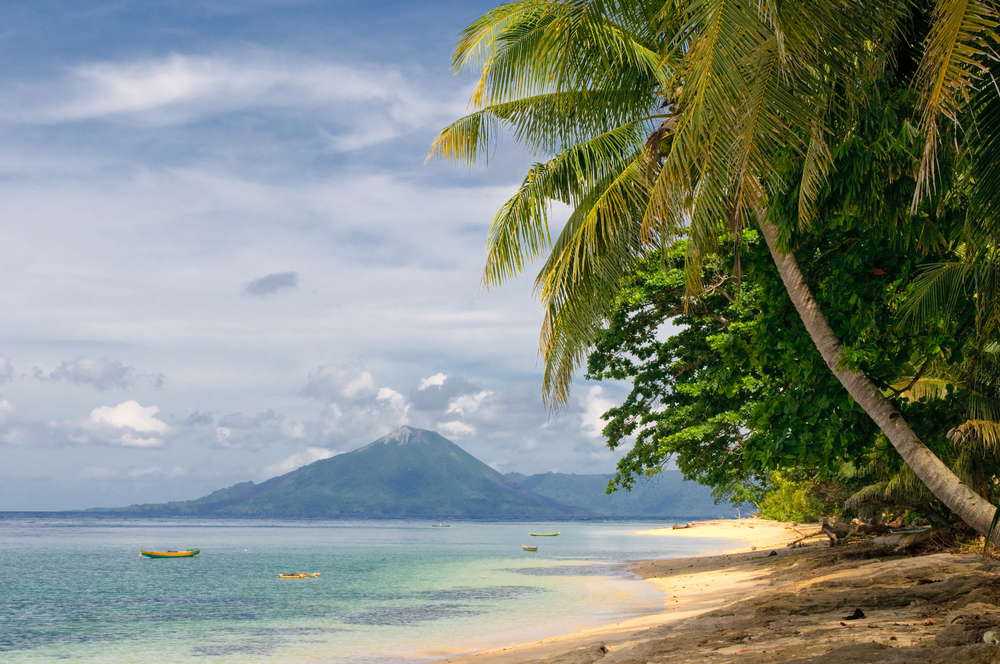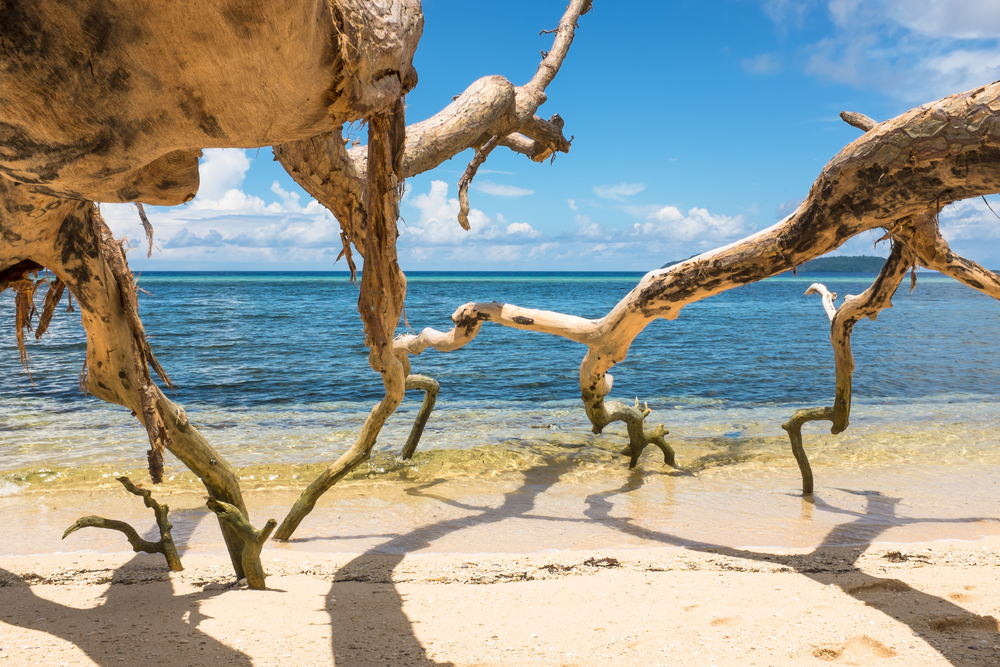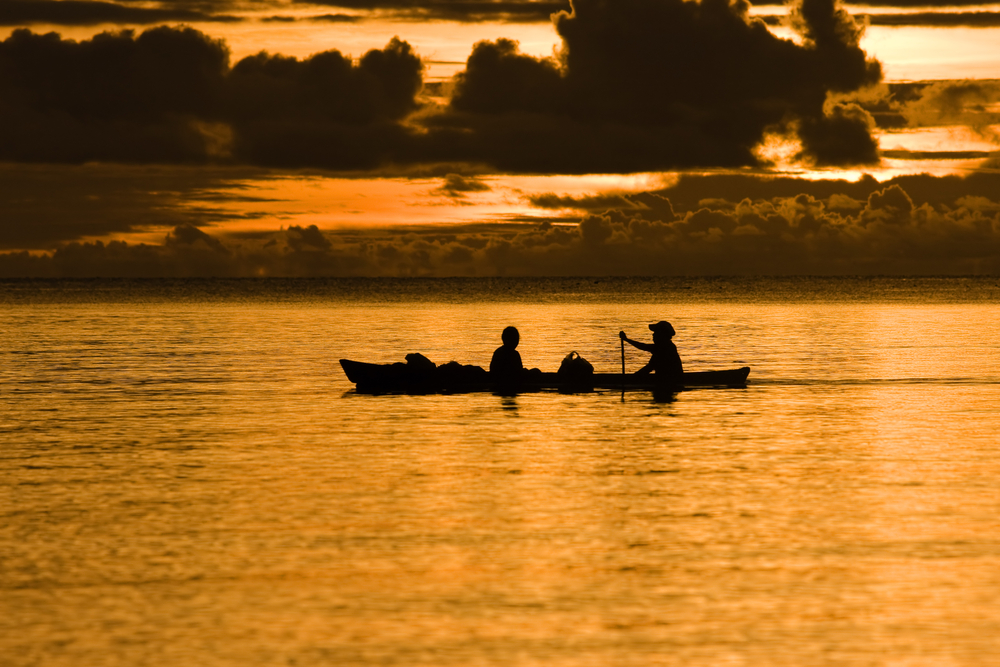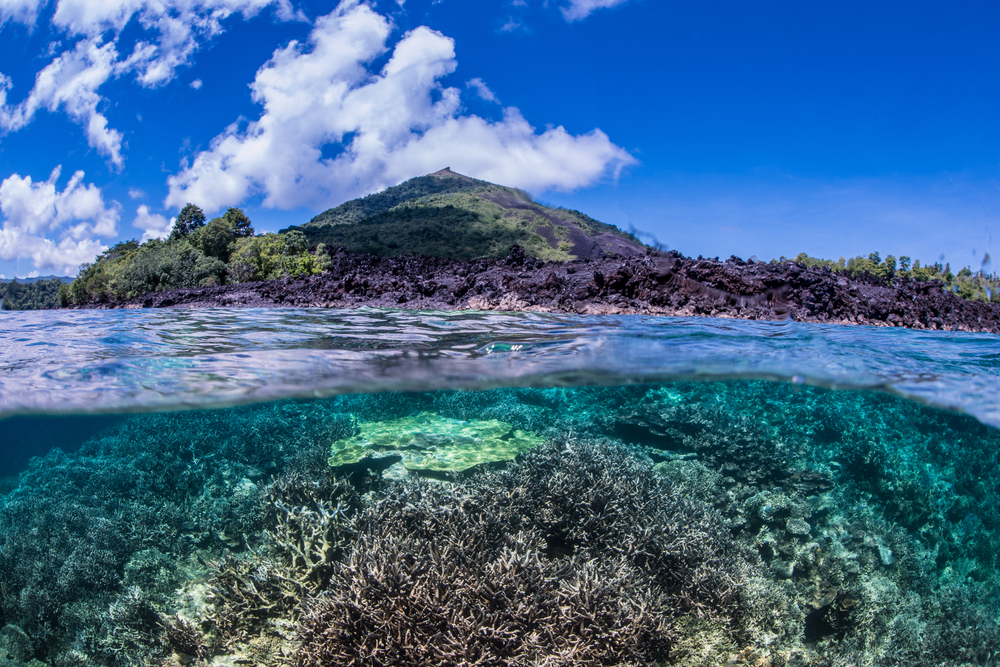Get to know Indonesia’s Maluku Islands
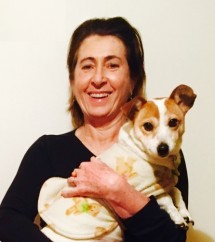
It seems most of the attention Indonesia receives focuses on either Bali or Java. But this vast archipelago has many more surprises to offer the intrepid traveler. Join Petra O’Neill as she explores the far-flung wonders of Indonesia’s spice islands.
My mind raced. It’s been three decades since I snorkelled. Can I still do this? But before I could mete out a response, my 80-year-old fellow passenger, Alan, had flipped backwards into the depths below where I soon joined him to gaze at the dazzling rainbow-coloured fish that swam before us.
This was just one of many amazing adventures I had while onboard the Ombak Putih, meaning “white wave”, a traditional 36-metre schooner built from ironwood by the renowned seafarers of Sulawesi, the Buginese, a seafaring voyager boasting functional cabins, large outdoor decks, and the bluest of sails.
Our 12-night journey took us to the fabled Spice Islands, an archipelago of scattered islands that stretches for over 4,000 kilometres along the equator in the vast expanse of the Banda Sea of eastern Indonesia. Many of the small, largely uninhabited islands are mountainous, some with active volcanoes, the vegetation dense with rainforests and idyllic white sand beaches.
Of great beauty and simple laid-back charm, these are the most perfect islands I have ever visited. Located in the biological demarcation zone between Asia and Australia known as the Wallace Line, the area has a rich collection of flora and fauna with brilliantly coloured birds including cockatoos, kingfishers, and parrots, while underwater, more than 60 percent of the world’s coral species are found here.
Spice of Life
The Maluku Islands were once the world’s only source of the highly valued spices cloves, nutmeg, and mace. The scents and preservative power of these spices was the motivating force behind perilous voyages undertaken by the Chinese, the earliest recorded spice traders, followed by the Arabs, and, centuries later, by Portuguese, British, and Dutch explorers who discovered the route to the Spice Islands and fought to control the monopoly.
In one extraordinary treaty signed in 1667, the British ceded sovereignty of the small island of Run to the Dutch in exchange for the island of Manhattan, so fierce was the European demand for spices. Crumbling forts bear testimony to the struggles of the Portuguese in the 16th century and the Dutch and British in the 17th century to control the lucrative spice trade.
In 1621, in a brutal show of strength at the direction of the Dutch East India Company, 44 leaders from the islands of Banda were executed, and many Bandanese were exiled or sold into slavery. Of 15,000, only 1,000 remained – an insufficient number to work in the plantations. The Dutch brought in indentured labour from Timor, Borneo, and Java, with the population now reflecting that mix of ethnic backgrounds and languages.
Divided into two provinces since 1999, the capital of the largely Christian Maluku province is Ambon, while to the north the capital of North Maluku, Ternate, is predominantly Muslim. Discovered by the Portuguese in 1529, Ambon stretches along a crescent shaped harbour with cafés, mosques, churches, a busy market, historic forts, and a Commonwealth War Cemetery in honour of the Allied servicemen who died here during WWII.
Setting Sail
It was here that I met the other 16 passengers – British, Canadian, Australian, Dutch and German – along with our guides Jennifer and Ari, and our Indonesian crew. There is something about cruising on a small ship in the tropics that encourages collegiality and the discarding of inhibitions.
A fellow traveller named Dick was the first to succumb. Inhaling that distinctive scent of clove, I found him smoking a kretek cigarette. Not bad, he said and with a crew who laughed and sang a lot, it wasn’t long before we danced the pogo and limbo each evening with unrestrained enthusiasm.
At Run, curious onlookers followed us to visit a centuries-old plantation where nutmeg is gathered using a basket tied to a long bamboo pole, the nutmeg trees shaded by tall kenari trees that provide a protective canopy, now more valuable than the nutmeg they provide shade for. Our perfect day ended with scoops of homemade strawberry ice cream topped with fresh kenari nuts.
About half of the archipelago’s population lives on the small island of Banda Neira, a sleepy, relaxed place with spectacular views across the strait to a volcano. We walked along a street lined with the oncegrand homes of Dutch planters, including the delightful Delfika Guesthouse, with deep porticos and colonnades made from ornamental cast iron.
We visited a Dutch Reform Church built in 1859 and the stately former Dutch Governor’s residence built across from the village green littered with cannons. At Fort Belgica, built in 1611, young women danced a nutmeg dance in step to loud percussion music. With a spectacular departure through the straits, two Kora Kora, traditional war canoes, escorted us, rowed with determination by men to the rhythm of a gong and drum.
At remote Pulau Ai, set in a sheltered bay of white sand that offers superb snorkelling, I met Ayem, the owner of the Green Coconut Homestay, who handed me his business card that read, See you later, alligator? Why not, Coconut. When I asked if he had visitors here, he replied somewhat indignantly, “Of course, why not!”
Timeless Traditions, Memorable Moments
We next set sail for Saparau with a pod of dolphins swimming alongside where we visited a sago plantation and a Dutch fort, and also drove around the island, with Dick giving away his beloved hat to a local woman who kept pointing at it. And so the days rolled by… visiting remote islands, each quite unique, and watching spectacular sunsets that turned the sky brilliant shades of orange, purple, and red. Late into the night, I would sometimes lie at the ship’s bow to gaze upwards at a vast sky filled with stars.
At Manipa, we visited a school where we were greeted with shy but inquisitive children. Ari dispensed books and pencils and we gave an impromptu performance of “Kookaburra Sits in the Old Gum Tree”. The children escorted us, shouting loud goodbyes and waving frantically from the jetty of an island so remote that they may not see another foreigner for a year or more.
When we arrived at the equator, one of the crew nicknamed Hollywood John, demonstrated considerable bravado by climbing the rigging and diving from a dizzying height into the water, with all following by leaping off the side to celebrate our arrival. And then, under a sprawling blue expanse of canvas, the Ombuk Putih set sail.
Almost 500 kilometres north of Ambon lie the volcanic islands of Tidore and Ternate, once the world’s only source of cloves, with many reminders of an exotic past, Portuguese and Dutch forts, mosques, Sultans’ palaces and stilted timber houses painted in bold colours with rusty corrugated metal roofs.
At charming Tidore, we visited two forts and travelled by auto-rickshaw to the market. But our remarkable journey was coming to an end, and in Ternate, we were overwhelmed to find ourselves in a busy city once more. The Spice Islands offer unique cultures, fascinating histories, and divergent geographies for those prepared to venture to this diverse, but decidedly remote region with travel opportunities as boundless as that distant ocean horizon, infinite and blue.
Fact File:
Getting there: You can find flights to Makassar from KL and Bali and from Makassar to Ambon and Ternate.
Entry requirements: Check beforehand – visitors from 169 countries will receive a free 30 day visa upon arriving in Indonesia (view the full list of countries here), while other nationalities are still required to pay for a visa.
Getting around: Sea Trek Bali offers several itineraries. Cabins are compact yet comfortable, with built-in drawers and en-suite bathrooms. The Indonesian food is excellent using freshly sourced ingredients. For bookings or inquiries contact [email protected] or visit www.seatrekbali.com and watch the videos at www.vimeo.com/87149955
When to go: April to early June and October to early December.
Insider tip: A few t- shirts, shorts, sarong, hat, swimmers, book, and sunscreen. Carry-on is recommended to keep a watchful eye on your belongings.
This was originally published in the Expat Magazine April 2014.
This article was updated by ExpatGo Sstaff on the 21 June 2016.
Read more:
- An Expat’s Tale on Exploring Lombok, the Other Kuta in Bali
- Six Amazing Destinations in Indonesia
- A Place Called Pemuteran: Bali’s Laid-Back Gem
- Cost of Living Comparison: KL and Jakarta
"ExpatGo welcomes and encourages comments, input, and divergent opinions. However, we kindly request that you use suitable language in your comments, and refrain from any sort of personal attack, hate speech, or disparaging rhetoric. Comments not in line with this are subject to removal from the site. "


